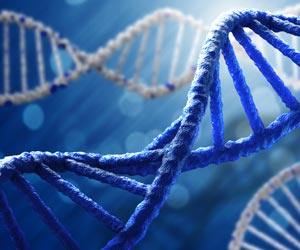An international team of researchers from the universities of Portsmouth, Southampton and Copenhagen found that changes in a protein-coding gene called Glutamate Ionotropic Receptor AMPA Type Subunit 1 (GRIA1) caused this rare genetic disease.
Now the variant has been identified, it will help clinicians come up with targeted interventions to help patients and their families, also opening the door to screening and prenatal diagnosis.
Advertisement
The GRIA1 gene helps to move electrical signals around the brain. However, if this process is interrupted or made less efficient, it can cause a reduction in the brain’s capacity to retain information.
Rare Genetic Disease: New Insights
The research team, made up of frog geneticists, biochemists and clinical geneticists, used tadpoles in which the human gene variants were mimicked using gene editing to show that GRIA1 changes are the underlying cause of the behavior-altering disease. The biochemical analysis of the variants was also performed in frog oocytes.
The findings are published in the American Journal of Human Genetics.
Study co-author Professor Matt Guille, who leads a laboratory in the Epigenetics and Developmental Biology research group at the University of Portsmouth, said: “Next generation DNA sequencing is transforming our ability to make new diagnoses and discover new genetic causes of rare disorders.
“The main bottleneck in providing diagnoses for these patients is linking a change discovered in their genome firmly to their disease. Making the suspect genetic change in tadpoles allows us to test whether it causes the same illness in humans.
“The resulting data allow us to support our colleagues in providing the more timely, accurate diagnosis that patients and their families so desperately need.”
Co-author Dr Annie Goodwin, Research Fellow at the University of Portsmouth who performed much of the study, said: “This was a transformational piece of work for us; the ability to analyze human-like behaviors in tadpoles with sufficient accuracy to detect genetic disease-linked changes opens the opportunity to help identify a huge range of diseases. This is particularly important given that so many neurodevelopmental diseases are currently undiagnosed.”
Co-author Professor Diana Baralle, Professor of Genomic Medicine and Associate Dean (Research) in the Faculty of Medicine at the University of Southampton, added: “Discovering these new causes for genetic disorders ends our patients’ diagnostic odyssey and this has been made possible by collaborative interdisciplinary working across universities.”
Professor Guille said that previously, while studies connecting a gene and a disease were mainly performed in mice; several labs, including his own at the University of Portsmouth, have recently shown that experiments in tadpoles can also provide very strong evidence about the function of variant human genes. The process of re-creating some gene variants in tadpoles is straightforward and can be done in as little as three days.
Professor Guille added: “We are currently extending and improving our technology in a program funded by the Medical Research Council; this is making it applicable to the wider range of disease-related DNA changes provided to us by our clinical collaborators.
“If the clinical researchers find the information sufficiently useful, then we will continue to work together to scale up the pipeline of gene function analysis so it can be used to direct effective interventions for a significant number of patients.”
Source: Eurekalert



